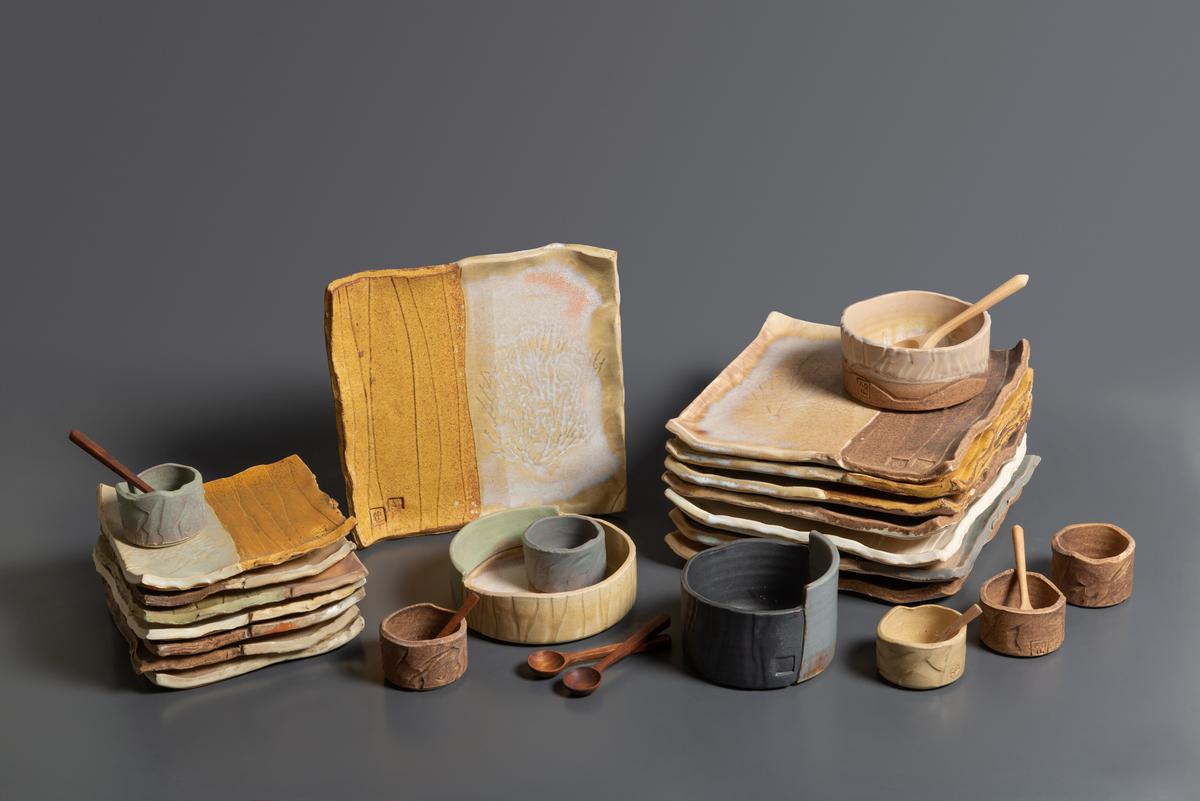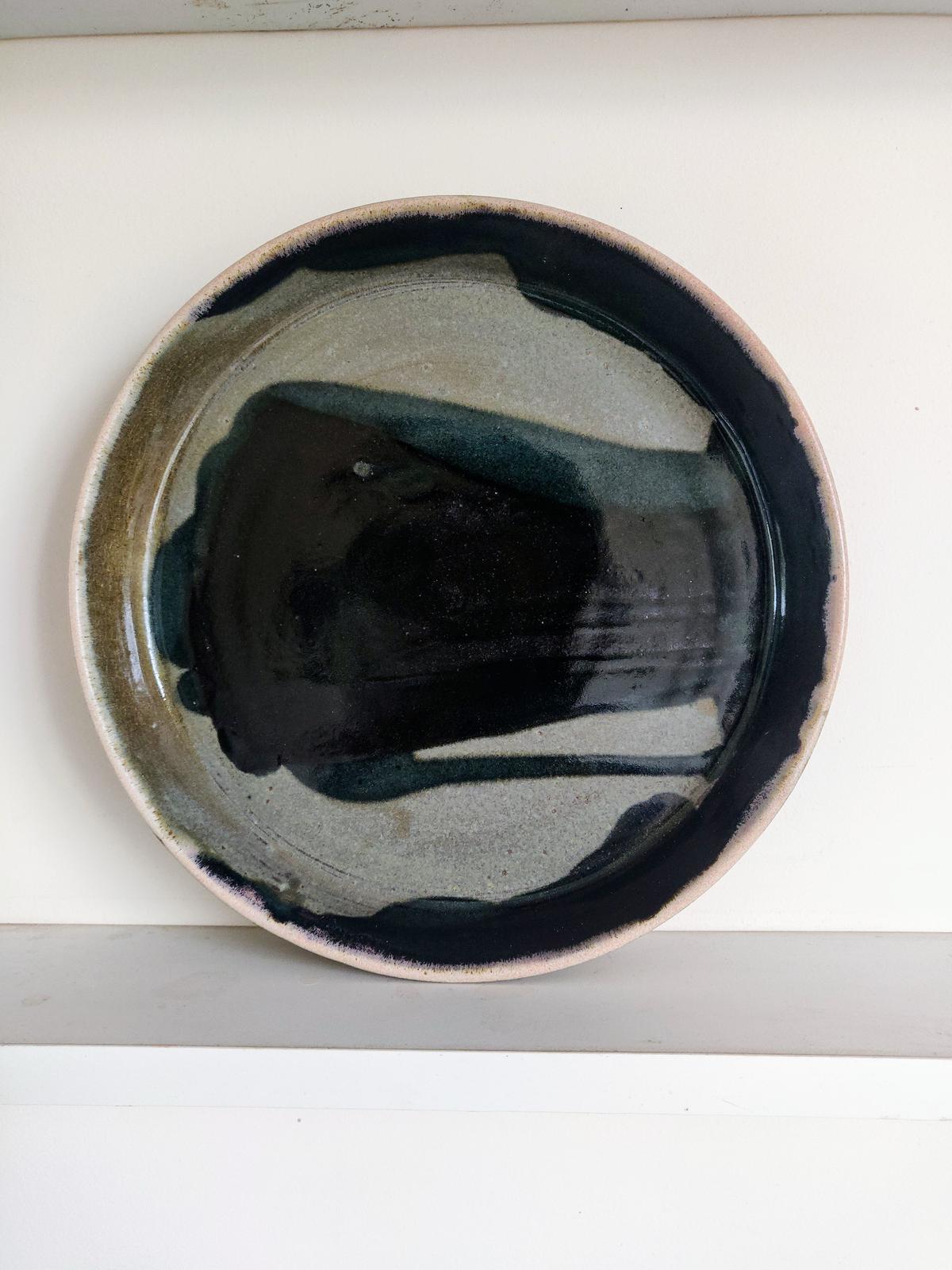The overarching sentiment that coloured Chennai’s first-ever studio potters’ market was that of surprise. So much so, that an elderly gentleman loudly exclaimed, “I did not know there were so many pottery artists in Chennai!” while waiting for a set of tableware, neatly wrapped in newspaper, to take home.
Most buyers at the two-day packed market, held in Apparao Galleries last month, shared similar feelings. Spontaneous orders, and happy exchanges of business cards quickly followed.
The market, which brought 21 studio potters under one roof was a window to Chennai’s burgeoning studio pottery ecosystem that has been seeing a steady rise of entrants in the last three years. While pottery is often associated with Auroville thanks to Ray Meeker and Deborah Smith’s pioneering institution Golden Bridge Pottery, not too far away, Chennai is waking up to a quiet wave of creators and collectors alike.
“The ceramic scene has been booming since the advent of Covid. Our country is full of people who have never done pottery before, and are suddenly discovering that even on a small balcony, you can set up an electric kiln, buy some clay and glazes, and make and fire pots!” says Adil Writer, a seasoned ceramic artist and painter based in Auroville. “Everybody is riding the ‘handmade’ or ‘Made in India’ wave right now. The interest has shot up in both making and purchasing,” he adds.
A coral ceramic canvas by Unna Annamalai
| Photo Credit:
special arrangement
Scope for play
Studio pottery is different from traditional pottery — while the former usually has a narrative and is experimental in outlook, traditional potters focus on utility and often come with the skills passed down generations. India has many potter communities who are yet to break into the mainstream.
Studio pottery is now more than just a hobby coloured by the pandemic, as young artists pick up the skill in the hope of pursuing a career in clay. Sculptures, ceramic murals, and custom decor pieces, apart from functional ware are all part of their ever-evolving repertoire. Not to mention potters’ markets, now common across the country, enable young and upcoming artists to travel with their wares.
For most novices, the scope for play that the medium offers is the initial motivator. Gowri Natarajan of GN Studio Pottery that opened in early 2020 says, “I was working in a bank. But I really craved to create something with my hands. The first thing I had in mind was carpentry.” Over the pandemic, following a personal loss, Gowri dove into the medium of clay.
“The joy of creating, and also the endless experiments one can do with clay is what keeps me interested,” says the artist whose textured glazes, sometimes obtained using wood ash, in ceramic tablewares, are seeing takers. Unna Annamalai, an architect and potter who heads MudPie Pottery Studio agrees, “I feel like clay keeps one grounded. When you do anything with clay, all five elements are incorporated. I was able to connect deeper at that level.”

Square tableware by Adil Writer set at Mandala Pottery, Auroville
| Photo Credit:
Marco Saroldi
Warm welcome
For the last couple of years, people have been more receptive to handmade pottery and the price that comes along with it, says Unna. “Earlier, there were a few who had questions on why they should pay more if they can pick up something from lifestyle stores for less. But now, people are really appreciating the labour that goes into a custom handmade piece,” she adds.
Adil says, “Another demographic shift that has happened since Covid is that people from all strata of society are coming to us in droves for full sets of tableware for their homes, ceramic murals for their walls, and also, large clay paintings. I think that eating out of plastic, melamine or steel plates, during the two to three years of lockdown and have made them realise that they need beauty in their homes for themselves and not for that one guest they invite once a year. This shift is very important to the pottery industry.”
Adil says that on most days, he receives enquiries on classes, workshops and internships, that further confirms this steady interest. For more than two years, Chennai’s Hindustan Trading Company has been conducting both one-day and long form pottery workshops at the store. Amritha Venketakrishnan, the current proprietor says, “Most of our classes have been full for the last two years. Pottery is also age-agnostic and sensory in nature. The fascination with clay starts early on in life, since it is one of the first things that we play with.”

One of Gowri Natarajan’s creations
| Photo Credit:
special arrangement
Having said that, sourcing good quality raw materials can get expensive. Most potters prefer to make their own glazes and source clay in bulk. “What you get at the store is good enough for a novice who is getting used to the craft. There are also air-dry variants that can be used for hand building and so on,” says Amritha. Which is why studio pottery’s sustainability as a career option must be weighed with caution — it might take a while to break even, Gowri adds.
Most upcoming artists, since the pandemic, are taking the social media route to reach their clientele. But it is not without its pitfalls, as many receive custom requests for recreations, and not originals. “I usually turn down those orders since I am keen on not imitating anyone else’s art,” says Rezina of Pottery Kaari, a studio based in Porur.
This is why learning the craft first and then making it your language is the right trajectory to take for any novice, Adil continues. “The humble potter makes functional ware that you use and appreciate in your daily life. There is more snob-value being called a potter these days, as opposed to being labelled a ceramic artist.”
Rezina’s ceramic cups, with a pastel palette
| Photo Credit:
special arrangement